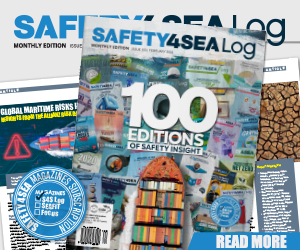In a joint statement in Washington D.C., President Juncker and President Trump agreed to strengthen EU-U.S. strategic cooperation with respect to energy. Both of the parties acknowledged the benefits of expanded exports of U.S. liquefied natural gas (LNG) to the EU gas market.
Mainly, since the first cargo in April 2016, US LNG exports to the EU have been increasing substantially and have seen a steep rise after President Trump and President Juncker’s meeting in July 2018 increasing by 272%.
Consequently, March 2019 recorded the highest volume ever of EU-U.S. trade in LNG with more than 1.4 billion cubic metres.
On May 3, important energy business executives, representing both parties, met in Brussels to discuss additional means to improve LNG trade, the role that competitively-priced US-LNG can play on the EU market and the growing opportunities for using LNG in the transport sector.
The meeting was held during the High-Level Energy Forum, that was opened by EU Commissioner for Climate Action and Energy Miguel Arias Cañete and U.S. Secretary of Energy Rick Perry.
The forum provides American and European businesses the opportunity to chart further actions to fully harvest commercial opportunities in the LNG trade, from new infrastructure for upstream development, liquefaction and re-gasification to pipeline network distribution as well as new business models and financial instruments in a changing market.
Also, it provides US and European decision-makers from companies in the LNG sector with match-making and deal-making opportunities.
Commissioner for Energy and Climate Miguel Arias Cañete commented after the meeting
Energy security is one of the key success stories of our transatlantic cooperation and one where we both have a keen mutual interest. It is therefore our common objective to further deepen our energy cooperation. Natural gas will remain an important component of the EU’s energy mix in the near future as we move towards cleaner sources of energy. Given our heavy dependence on imports, US liquefied natural gas, if priced competitively, could play an increasing and strategic role in EU gas supply.
Increased imports of US LNG contribute to the EU’s goal of diversification of energy supply. Competitive, fluid and stable, the EU gas market is the second biggest single gas market in the world after the U.S.
In the meantime, the European gas imports are expected to rise in the following years, as the domestic production is decreasing, whereas the demand is projected to remain at a comparable level as gas has been identified as an important transition fuel in the EU’s efforts to decarbonise its economy.
The background of the development of liquefied natural gas capacities in the EU:
- The signature of a grant agreement between the Polish government and the Polskie LNG company for the extension of the Liquefied Natural Gas (LNG) terminal in Świnoujście, in north-western Poland on the Baltic Sea coast, on 24 April. The EU invested almost €128 million from the European Regional Development Fund in extending this terminal, this comes on top of €224 million already invested under the previous funding period.
- The final investment decision of the LNG terminal on the island of Krk in Croatia in January 2019. The EU has contributed with a total of €124 million(including €108 million for the terminal and €16 million for the evacuation pipeline).
The EU is also supporting capacity developments in Greece, Spain, Ireland, Sweden and Cyprus, a detailed table is available online.
The EU projects that in 2022 all of its Member States, except Malta and Cyprus will have access to three sources of gas and 23 Member States will have access to the global LNG market.
Increase of LNG Imports from the US:
Since July 2018, cumulative EU imports of liquefied natural gas from the U.S. have increased by 272%.
With a share of 12.6% of EU-LNG imports in 2019 so far, the US is Europe’s third biggest supplier of LNG, while Europe has emerged the primary destination of the U.S. LNG in January to February this year ahead of Asia[1]. The European Union is ready to facilitate more imports of liquefied natural gas from the U.S., if the market conditions are right and prices competitive.
Current figures show that:
- In the nine months since the 25 July 2018 Joint Statement, cumulative EU imports of U.S. LNG are up by 272% relative to the period beforehand, a total of 10.4 billion cubic meters (bcm).
- In terms of the EU’s total imports of LNG, the U.S. share was 13.4% over the last six months, compared to 2.3% before the Joint Statement.
- Since early 2016, the EU has received more than 110 LNG cargoes from the U.S. In 2017 Europe represented more than 10% of total U.S. LNG exports, up from 5% in 2016. In the 2018 calendar year, some 11% of US LNG exports went to the EU market. However, in the 9-month period since the Joint Statement (August 2018 – April 2019), this share rises to nearly 30%.


































































